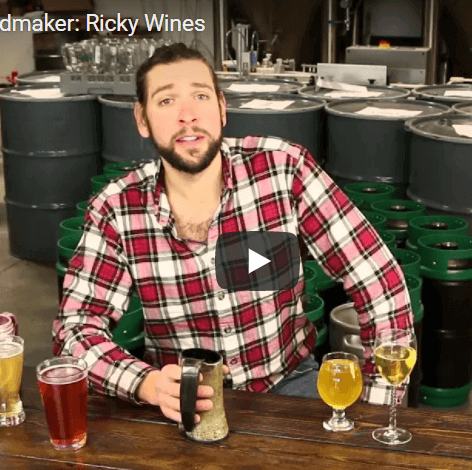In which Ricky the Meadmaker answers questions about the best ways to clarify mead, when to switch to a conical fermentor from a carboy, how to make a sweeter craft mead, the secrets of aging, and how best to use squash as a brewing ingredient.
Now that this is the location for Colchester's Mead Hall, I can officially say it's new and improved. For a lot of people, new and improved means extra seating or the fact that we have a restaurant and a kitchen and all those things. How is it new and improved for your beloved meadmaker? The taps are right here.
Welcome to Ask the Meadmaker, where I, Ricky the Meadmaker, answer your questions about mead making, mead drinking, mead brewing, and really any question you're willing to send to me.
Our first question this week is a follow-up from something a few weeks ago. Azazeal wants to know what I think the best way to clarify mead is. I read an article about this a little while back and I'm sure there's a link to it below me. He wanted to know if it's gelatin or egg or simply waiting. Well, the answer is, simply waiting usually does the trick. But if it doesn't, after maybe a year, more time isn't going to help. All of your other options are really personal preference and what you're trying to get rid of. If you have fruit in there, you have a haze. It's probably a pectin haze, so using some pectic enzyme would help. The big question for a lot of people is, some of the clarifying agents are not vegan or even vegetarian. So, you may want to look into those ingredients a little more. We have another article linked below if you have any concerns in that area.
Our next question comes from Brandon, who wanted to know if I have ever used a conical fermenter as a homebrewer and what the defining moment is when you want to switch from being a carboy or bucket-brewing kind of homebrewer to being a conical fermenter-owning homebrewer? The answer is no, I did not. I feel for a lot of people, the defining moment when they switch from buckets and carboys to conicals is when a wealthy relative dies.
Brandon also wanted to try his hand at making a craft mead and his concern was that he likes his meads a little sweeter. How does he put in a small amount of honey, rendering it a low alcohol content, but still have some residual sweetness? Should he take readings every day and simply stop it with sorbate when it gets low enough? Well, that's certainly one option. Another way to do it is to let it ferment all the way dry, add your sulfites and sorbate and then add sugar in the form of honey or something else back.
Chris has a great question about aging. He wanted to know if aging in packaging (specifically, he asked about cans) is the same as aging in a big fermenter. The answer is, more or less it is. It will age a little differently because of some surface area and temperature changing, but aging is aging for non-distilled products. When whiskey goes into the bottle, it's the same whiskey on day one as having laid down the bottle for 30 years. But your mead will keep changing. He also wanted to know if carbonation affects or stops aging in some way. And the answer is, not really as far as I know.
This episode feels weird, right? Like I'm just answering the question and moving on. I don't know what's going on.
Our last question this week comes from Shawn, who has a very interesting recipe question. He came across a recipe for a beer which contained caramelized squash, and he was reading elsewhere on the internet that it's better to use raw squash. He wanted to know whether I thought caramelized or raw would be better for mead. The answer is, caramelized squash will bring a caramelized flavor to your beer and fresh squash will bring a fresh, pumpkin flavor.
I think what he's missing is a big piece of the difference between brewing beer and brewing mead, that roasted caramelized squash is being added in the mash of the beer. That means that the enzymes in grain, alpha and beta amylase, and a few other lesser ones are breaking down the starches into sugars. You're getting additional fermentables, things that will be turned into alcohol, by adding squash to a mash for a beer. Now, adding caramelized or raw squash right to a mead will give you a squashy flavor, but it will also bring some vegetal flavors. Yeast has the ability to break starches into sugars, but it doesn't do it very well. So, in the end, if you want that caramel, squashy flavor, you might be better off doing it with something like a braggot, using a beer that has the squash and putting lots of honey in there.
That's our last question of the week. I'm just going to send it over to Ricky with our word of the week. Ricky?
Thank you, Ricky. This week's word is mead benches. Now I have some fine mead benches in Colchester's Mead Hall. But in the early lines of Beowulf, there is a phrase where they say that he was the upsetter of mead benches. It's not entirely clear what is meant by this, but the reigning theory is that mead benches is a term, a kenning, for young warriors or young armies. Why mead benches means young armies I do not know.
Mead benches. It's our term of the week and the end of our show. Keep sending your questions and I'll get to them as soon as possible. Cheers.




